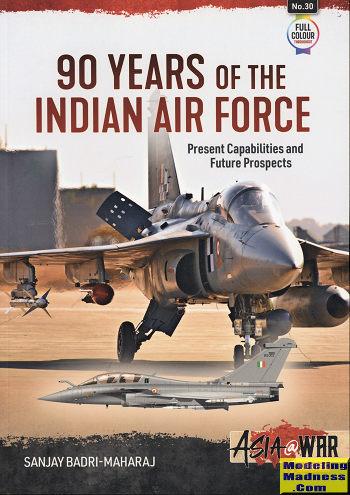 For
decades, India was part of the British Empire. The British relied quite a bit on
the manpower of the subcontinent to help to keep things in other parts of the
Empire in check and as such, there was a fairly large Indian Army (run by
British officers, of course). In the early 1930s, the Indian Air Force came into
being. The first squadron was equipped with the Westland Waipiti, a two seat
'colonial bomber' that was mainly used to help keep warring factions in check.
As time went on, the force was expanded, still operating near obsolete types on
policing duties as much as anything else. The Japanese entry into WWII saw a
fairly large increase in the number of squadrons as well as increased lethality
of the aircraft flown.
For
decades, India was part of the British Empire. The British relied quite a bit on
the manpower of the subcontinent to help to keep things in other parts of the
Empire in check and as such, there was a fairly large Indian Army (run by
British officers, of course). In the early 1930s, the Indian Air Force came into
being. The first squadron was equipped with the Westland Waipiti, a two seat
'colonial bomber' that was mainly used to help keep warring factions in check.
As time went on, the force was expanded, still operating near obsolete types on
policing duties as much as anything else. The Japanese entry into WWII saw a
fairly large increase in the number of squadrons as well as increased lethality
of the aircraft flown.
When India gained its independence in 1947 the air force
was equipped with mostly British equipment. This is a trend that lasted well
into the 1950s, when there was an influx of French equipment while later on,
Soviet aircraft were also purchased. Egypt has developed an indigenous aircraft
industry that has built trainers, their own ground attack jet, and has produced
a number of other types under license. The majority of these license built
aircraft have been British or Soviet/Russian designs, some of which were
modified for local use. However, India has also been working on more modern
local designs such as the strike aircraft shown on the cover.
The Indian Air Force is not just combat aircraft, but
also operates a fairly large fleet of helicopters and cargo/transport aircraft
as well. Typically, these aircraft have come from the 'usual' sources, but is
starting to includes some US types. The IAF is also responsible for early
warning radar systems, as well as AA defense, SAMs, and ballistic missiles.
All of this is covered in this book. The author also
takes the time to discuss the political aspect of the IAF. Plans are often
hampered by differences of opinion in the higher levels of command as well as a
somewhat frequent lack of advanced planning when it comes to introducing new
equipment to replace those reaching obsolescence. Despite this, the IAF has been
capable of properly supporting the army, taking on border challenges from
Pakistan and China, as well as expanding their influence in the region. All of
this is covered quite well within these pages in a very readable manner. It
provides a solid look at the history of the IAF from its formation and what is
in store for the future. Another great read from Helion and a book I know you
will like.
July 2022
Copyright ModelingMadness.com. All rights reserved. No
reproduction in part or in whole without express permission.
Review book courtesy of
Casemate Publishing, where you can order your copy
at this
link.
If you would like your product reviewed fairly and quickly, please
contact
me or see other details in the
Note to
Contributors.
 For
decades, India was part of the British Empire. The British relied quite a bit on
the manpower of the subcontinent to help to keep things in other parts of the
Empire in check and as such, there was a fairly large Indian Army (run by
British officers, of course). In the early 1930s, the Indian Air Force came into
being. The first squadron was equipped with the Westland Waipiti, a two seat
'colonial bomber' that was mainly used to help keep warring factions in check.
As time went on, the force was expanded, still operating near obsolete types on
policing duties as much as anything else. The Japanese entry into WWII saw a
fairly large increase in the number of squadrons as well as increased lethality
of the aircraft flown.
For
decades, India was part of the British Empire. The British relied quite a bit on
the manpower of the subcontinent to help to keep things in other parts of the
Empire in check and as such, there was a fairly large Indian Army (run by
British officers, of course). In the early 1930s, the Indian Air Force came into
being. The first squadron was equipped with the Westland Waipiti, a two seat
'colonial bomber' that was mainly used to help keep warring factions in check.
As time went on, the force was expanded, still operating near obsolete types on
policing duties as much as anything else. The Japanese entry into WWII saw a
fairly large increase in the number of squadrons as well as increased lethality
of the aircraft flown.